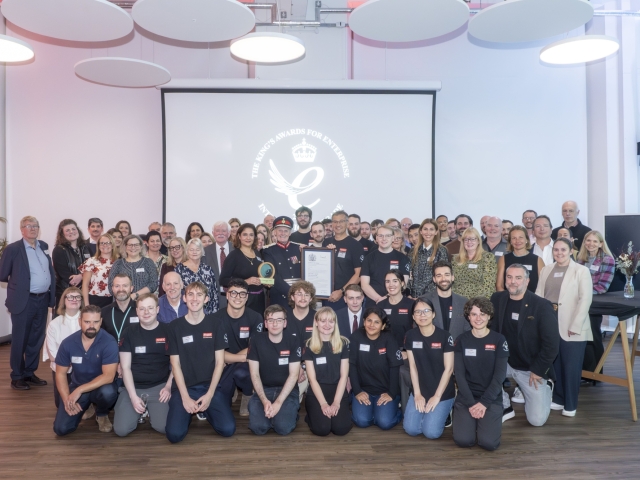
As the world races toward a low-carbon future, the offshore energy industry finds itself at a critical crossroads. It remains one of the highest-emitting sectors globally—but it also holds enormous potential to reduce emissions through innovation. At Fennex, we believe that digital technologies—especially when powered by AI—are key to making offshore operations smarter, safer, and significantly more sustainable.
Over the past eight years, we’ve helped companies across oil, gas, and now offshore wind, to digitise safety and assurance processes that were previously slow, manual, and inefficient. These solutions aren’t just about replacing paper forms or spreadsheets. They’re about improving decision-making, preventing incidents, and reducing the resource intensity of operations—both in ways we can measure, and in ways that are harder to quantify but no less important.
From Paper to Proactive: A New Era for Safety Observations
One of our flagship tools is BBSS™, our Behaviour-Based Safety Solution. It replaces outdated paper-based safety cards with a simple app that anyone on site can use to submit safety observations. That data feeds directly into real-time dashboards for managers—highlighting trends, triggering alerts, and generating daily reports.
When Noble Corporation rolled out BBSS™ across its 41 offshore rigs, the results were immediate and measurable:
- 25,000 man-hours saved
- 40% increase in productivity
- 500,000+ paper cards eliminated
These are direct wins for sustainability—reducing paper waste, lowering travel needs, and cutting the energy footprint of manual processes. But the bigger impact came from the shift in safety performance. After adopting BBSS™, Noble saw a 43% drop in recordable incidents. That reduction translates into fewer emergency interventions like medevacs, fewer shutdowns, and a safer, more stable work environment—all of which reduce emissions significantly.
Safety That Sees Ahead: Using AI to Predict and Prevent
More recently, we’ve worked with Noble to take safety one step further—with the development of a real-time predictive safety dashboard powered by machine learning. By analysing millions of observations collected over two years, the tool can forecast potential incidents 30 days in advance—giving HSE teams a powerful early warning system.
The dashboard not only highlights which rigs are at greater risk, but also pinpoints key behavioural drivers—like crew stability, quality of corrective actions, and leadership engagement. Instead of managing risk through assumptions, HSE teams now have data-backed foresight to make targeted interventions.
This doesn’t just improve safety—it also reduces the need for high-emission emergency responses. By preventing incidents before they occur, we help companies lower the operational and environmental cost of managing risk.
Digital Assurance That Cuts Carbon
Another powerful example is our Policy Assurance Management (PAM) platform, which digitises audits, checklists, and verifications. PAM enables offshore teams to self-verify compliance using a mobile app—removing the need to fly auditors to site for routine checks.
In a recent case study through the Impact Forecast programme, we found that by simply reducing audit team travel, one company could avoid more than 15 tonnes of CO₂ emissions annually. That’s the equivalent of:
- Two people’s annual carbon footprint
- 16 transatlantic flight passengers
- Or two laps around the planet in a petrol car
And that’s just the direct savings. PAM also improves compliance, reduces risk, and supports more efficient operations—generating indirect sustainability gains over time.
Efficiency, Safety, Sustainability—Across the Lifecycle
Whether we’re supporting a drilling campaign, a decommissioning project, or a new offshore wind development, the challenges are the same: complex teams, high risk, and rising expectations for performance and sustainability. That’s where digital tools make a difference.
With our newest solution, WindSafe™, we’re helping offshore wind developers embed safety and sustainability from day one. It’s the first modular platform built specifically for offshore wind safety and assurance—bringing the same efficiency, risk control, and data transparency we’ve delivered in oil and gas into the renewables space.
The Bigger Picture: Digital Tech’s Role in a Cleaner Future
As we look to the future of energy, it’s important to recognise that even digital technologies—including AI—carry a carbon footprint of their own. But when applied strategically, especially in high-risk, highly extractive industries like offshore energy, their potential to reduce emissions far outweighs their cost.
From increasing efficiency and eliminating waste to improving safety and reducing the need for resource-heavy interventions, digital and AI-powered solutions aren’t just modernising how we work—they’re fundamentally reshaping what sustainable operations can look like.
At Fennex, we’re proud to support this shift—not just by digitising outdated processes, but by designing intelligent systems that help companies make better decisions, faster.
By Aspen Kissinger, Product Growth Lead & Net Zero Lead at Fennex

















